Jun 17, 2020 | MBA, News
Study tips for courses in data analytics

Will Duncan, who has been an instructor at Baker’s School of Professional and Graduate Studies since 2014, teaches a variety of courses, but he is most known for teaching data analytics and his ability to break down this complex subject.
Duncan’s data journey began at Baker University on the Baldwin City campus. He majored in mathematics and international relations and served as a peer tutor and was involved in calculus workshop instruction. After graduating in 2012, he pursued a research fellowship involving trade data at the University of Oxford, where he also earned a master’s in global governance and diplomacy. He is now wrapping up his PhD in economics at the University of Kansas.
Duncan notes that many students get nervous when beginning a data analytics course, but he wants to reassure them that data analysis is just the application of logic.
“Data courses usually involve some quantitative thinking and the use of some sort of software package,” he said. “My students typically use R or Excel to work with data and are often required to apply probability and statistics. That means study tips in two directions: dealing with the math and dealing with the software.”
Here are Duncan’s tips for the math side of data analytics, probability, and statistics:
- Remember statistical tests as a set of logical steps and processes. The goal of statistics is to understand what is likely and what is not likely.
- Think of all statistical tests as advanced counting techniques. We all know how to count so, at their foundation, we all understand statistical tests. All math comes with a lot of notation. If a student focuses on notation and what this symbol or that expression means, then they have missed the forest for the trees. Focus on envisioning a concept. I’m constantly reading about new statistical techniques and have a dataset in my head to be used with statistics concepts.
- Try to imagine all statistics and probability concepts on a dataset that is familiar to you. Apply the concepts mentally to this dataset as you learn them.
Once a student has mastered math, it’s time to master the software package. Duncan says students often struggle with statistical software.
“Many people have a hard time thinking beyond themselves,” he said. “Working with software requires you to (a) know what you want and (b) understand something beyond yourself well enough to communicate effectively with it.”
With that in mind, here are Duncan’s tips for statistical software:
- An error in the software package usually means the command was typed incorrectly. Fix this by understanding how what you typed is not exactly in the same format as the command structure required (i.e., become a problem solver).
Some students tell me that some evenings they will have spent more time crying over their homework than making progress because nothing in Excel works for them and they are worthless, terrible at math, failing the class, etc. I always feel so awful when a student tells me such things. If you’re stuck, keep reviewing your commands. For instance, Excel or R truly do not care that you want to take a t-test; the program only knows exactly what you tell it to do.
- When faced with a software obstacle, try to avoid frustration in favor of asking different questions about why you are getting an error. Google each one (or ask a learned friend like the professor). Again, become a problem solver.
This is how I learned data analysis. I was thrown in the deep end on a summer research fellowship at Oxford and was asked by my supervising professor to work with trade data. He wanted this or that report done, and for each request I sat in my cubicle Googling all the commands to STATA (the statistical software package used on the project) to meet each request.
- Start data assignments well in advance of the deadline. There is likely to be something that stops you from finishing the assignment in one night and you should plan to communicate with the professor. This takes time.
Many people will face a number of software obstacles and will need to spend a considerable amount of time with Google, the textbook, and class resources, so these assignments can be more time consuming than they might initially appear.
Finally, Duncan offers advice that is unrelated to math or software but is helpful for any data class.
“Please stop telling yourself and your professor that you are bad at math and Excel or R,” he said. “It doesn’t help you learn and it doesn’t help your self-esteem. Finally, be kind and patient with yourself and know that data analysis is a skill that takes so much practice to learn.”
To learn more about the data analytics courses that Baker offers, visit bakerU.edu/spgs.
